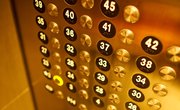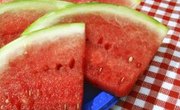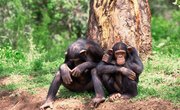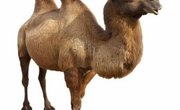Home is an important part of a preschooler's life because it's where she eats, sleeps, plays and spends time with her family. It might not occur to most preschoolers, however, that homes have many similarities as well as many differences. A house thematic unit will help preschoolers learn about their own homes as well as the homes of other people around the world.
Build a House
Art projects encourage preschoolers to use their imaginations, but they also help build fine motor skills. Provide art supplies such as craft sticks, paper, modeling clay, glue and scissors, and have students make a representation of their own home. Let the children share the characteristics of their homes with the class. Alternatively, let the children build sand castles in the playground sandbox. If your house unit falls near the winter holidays, let the preschoolers make gingerbread houses. Make a house on a larger scale by bringing in a big cardboard box to become a house. Work together to identify what the box needs to make it a house. For example, students might say it needs a front door or some windows. Make these modifications, and then let the children take turns "playing house" during dramatic play time.
Different Kinds of Houses
Show preschoolers pictures of different houses such as igloos, huts, teepees and castles. If your house unit falls near Halloween, show a few spooky, but not frightening, haunted houses. Ask the students to point out the characteristics of each house and how they are alike and different. For example, the students can point out that an igloo is made of ice, but that it still has a door like other kinds of homes. Extend the activity by asking the children to bring in a photograph of their house, and do the same compare and contrast activity with the pictures. Challenge the preschoolers even more by cutting the pictures and photographs apart to create puzzles. In addition to boosting fine motor skills, putting the puzzles together will help preschoolers recall which characteristics are part of each type of house.
House and Home Crafts
Do a shape activity by cutting several shapes -- such as squares, rectangles, circles and triangles -- from colored paper in a variety of sizes. Give the shapes to the preschoolers, along with a blank piece of paper. Show the children how to glue the shapes to the blank paper to make a house. For example, a large rectangle could be the structure, while a smaller rectangle could become a door. Give preschoolers a blank outline of a house that includes the major rooms, such as the kitchen, living room, bedrooms and bathroom. Give the students small pictures of items that go in a home, such as a stove, toilet and bed. Ask the preschoolers to glue the pictures to the appropriate rooms in the house outline.
Miscellaneous Ideas
Gather a variety of pictures, some of items that go inside a house and some of items that don't belong in a house. Show the students the pictures, and have them sort them into piles. For example, pictures of a lamp, pillow, refrigerator and sink would go in the pile of things that belong inside a home while pictures of a car, road, playground and bicycle are items that go in the pile of things that don't belong in a home. Read books about homes, such as "The Three Little Pigs," retold by many authors, or "The House That Mack Built," by Susanna Leonard Hill, which describes how a home is built. "A House is a House For Me," by Mary Ann Hoberman, illustrates several different animal homes and can extend your house unit into learning about ant hills, bee hives and beaver dams.
Related Articles
References
- Preschool Theme Boxes, Grades Preschool - PK; Kelly Gunzenhauser and Melissa Fisch
- Scholastic: Parents: My House
- The House That Mack Built; Susanna Leonard Hill
- A House is a House For Me; Mary Ann Hoberman
Writer Bio
Sara Ipatenco has taught writing, health and nutrition. She started writing in 2007 and has been published in Teaching Tolerance magazine. Ipatenco holds a bachelor's degree and a master's degree in education, both from the University of Denver.











